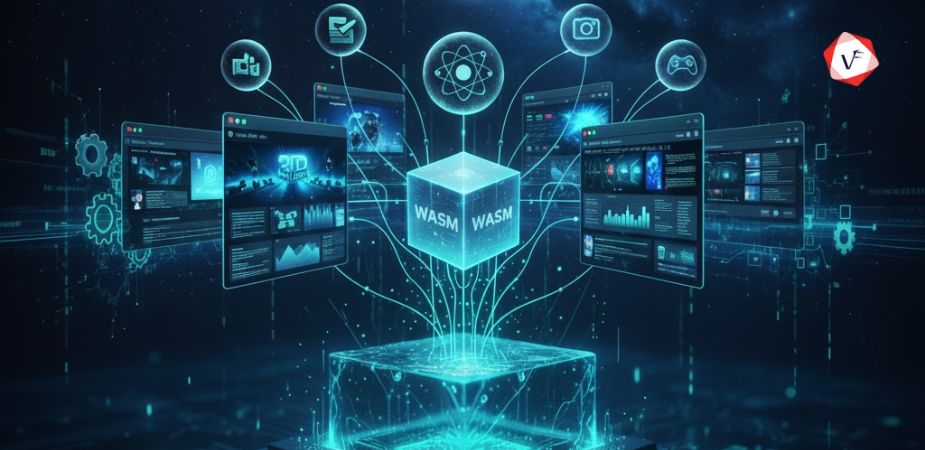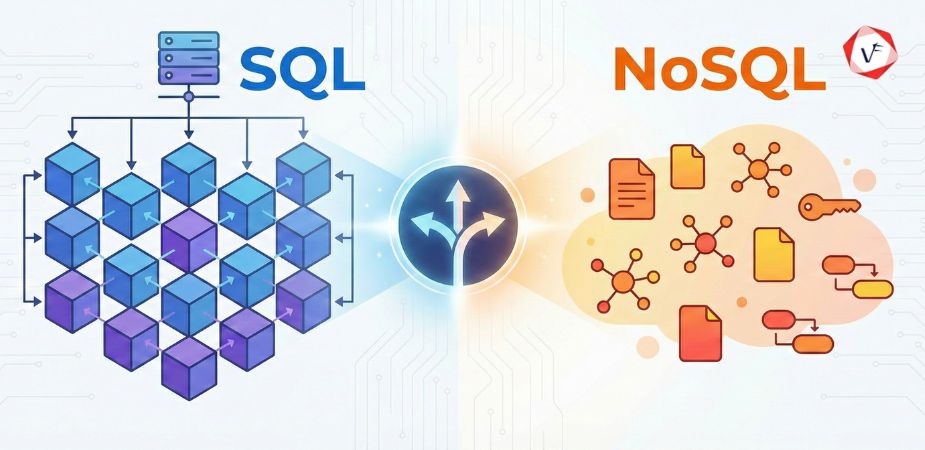- August 01, 2025 3:41 pm
- by Kevin
- August 01, 2025 3:41 pm
- by Aruthra
Developers across the globe are gravitating toward programming languages that offer exceptional performance, memory safety, and concurrency. This article delves into the technical specifics and intrinsic features of some of the most notable emerging programming languages in 2025. We will explore languages that have redefined traditional paradigms and continue to influence how software is built today. By focusing solely on the languages themselves, this article examines each language’s architecture, syntax, performance benefits, and real-world applications, ensuring that you gain a clear understanding of why these programming languages are indispensable for modern software development.
Rust has rapidly established itself as one of the most significant emerging programming languages in 2025, and it is widely recognized as one of the most in-demand programming languages at the present. At the core of Rust’s appeal is its focus on memory safety without sacrificing performance. Unlike traditional programming languages, Rust employs a unique ownership system that enforces strict compile-time checks to eliminate data races and memory leaks. This rigorous approach ensures that Rust is both safe and efficient—a combination that is rare among modern programming languages.
In terms of syntax, Rust is designed to be expressive and intuitive. Its programming language philosophy is reflected in features such as pattern matching, type inference, and algebraic data types. These characteristics not only enhance code clarity but also contribute to reduced boilerplate code, making development faster and less error-prone. Rust’s concurrency model is another critical factor that has contributed to its status as a successful programming language. With built-in support for fearless concurrency, Rust enables developers to write parallel code that is both safe and efficient.
The performance of Rust is comparable to that of lower-level languages like C and C++, but without the typical pitfalls of manual memory management. For systems programming, embedded systems, and even blockchain technology, Rust offers a robust solution that minimizes runtime errors and optimizes hardware utilization. The emphasis on performance, coupled with its state-of-the-art security features, makes Rust a cornerstone in the realm of emerging programming languages. Its growing ecosystem of libraries and community support further reinforces its status as one of the most influential programming languages of 2025.
Go, also known as Golang, is another standout among emerging programming languages and is recognized as one of the most in-demand programming languages in 2025. Developed with a strong focus on simplicity and efficiency, Go was designed to address the challenges of scalable backend systems and distributed computing. Its clean syntax and straightforward design philosophy have made it a favorite among developers who require fast compilation times and efficient concurrency management.
Central to Go’s success is its native support for concurrent programming through lightweight threads known as goroutines. These useful programming features allow developers to write highly concurrent code with minimal overhead. Go’s built-in channels facilitate safe communication between goroutines, ensuring that concurrent operations remain coordinated and free from race conditions. This makes Go especially suitable for cloud services, microservices architectures, and networked applications where performance and reliability are paramount.
Moreover, Go’s garbage collection mechanism is optimized to reduce latency, a critical consideration for modern programming languages that aim to deliver high throughput. The simplicity of Go’s syntax, paired with its powerful standard library, enables rapid development and deployment of robust backend systems. The language’s design prioritizes efficiency and readability, making it one of the most user-friendly and in-demand programming languages for contemporary software development. With an ever-expanding ecosystem and strong community support, Go continues to be a dominant force among programming languages in 2025.
Kotlin has emerged as a powerful and versatile language, and its rise as one of the most popular programming languages in 2025 is a testament to its adaptability and robust feature set. Initially popularized by Android developers, Kotlin now stands as a modern programming language that transcends mobile development, addressing cross-platform needs with Kotlin Multiplatform. Its design emphasizes conciseness, safety, and interoperability, particularly with legacy languages like Java, which has solidified its position amongst emerging programming languages.
One of the defining features of Kotlin is its concise syntax, which reduces boilerplate and makes code easier to read and maintain. This clarity is essential for programming languages that aim to streamline the development process. Kotlin’s strong static typing system enhances reliability by catching errors at compile time, a benefit that is highly valued among developers. Additionally, Kotlin’s extension functions and coroutines facilitate asynchronous programming, allowing developers to manage concurrency effectively without the complexity often associated with multithreaded environments.
Kotlin’s versatility is evident in its ability to function seamlessly across different platforms. Whether used for Android, iOS, web, or desktop applications, Kotlin delivers consistent performance and developer productivity. This cross-platform capability reinforces its status as an emerging programming language that meets the diverse demands of modern application development. With its focus on developer experience, safety, and scalability, Kotlin remains one of the leading in-demand programming languages in 2025, pushing the boundaries of what programming languages can achieve.
Swift has established itself as one of the most influential programming languages, particularly within the Apple ecosystem. Developed by Apple, Swift offers programming features that blend safety, speed, and ease of use. Swift’s clean syntax and emphasis on performance make it a standout among emerging programming languages in 2025.
Swift’s design prioritizes clarity and conciseness, allowing developers to write expressive code with fewer errors. The language incorporates advanced features such as optionals, generics, and powerful error-handling mechanisms. This makes Swift particularly attractive for developing robust iOS and macOS applications. The performance optimizations in Swift enable rapid execution and efficient resource management, making it one of the top programming languages for building native Apple applications. As the ecosystem continues to evolve, Swift remains a prime example of programming languages that combine innovation with reliability.
<a href="https://www.typescriptlang.org/" target="_blank">TypeScript</a> has emerged as a crucial enhancement to JavaScript and is now considered one of the most important programming languages of 2025. As a statically typed superset of JavaScript, TypeScript addresses many of the shortcomings of its predecessor by introducing type safety and improved code maintainability. This makes it an essential tool for large-scale web applications where languages are required to manage complex codebases. TypeScript’s integration of static types allows developers to catch errors during the compile phase rather than at runtime, which significantly reduces bugs and enhances the overall robustness of web applications. The language’s compatibility with popular JavaScript frameworks and libraries ensures a smooth transition for developers, making TypeScript a natural evolution in the history of emerging programming languages. With its emphasis on clarity, maintainability, and scalability, TypeScript continues to be a driving force among the leading programming languages of 2025, cementing its place as an indispensable tool for enterprise-grade software development.
While established names like Rust, Go, Kotlin, Swift, and TypeScript dominate the landscape of programming languages in 2025, several emerging programming languages are beginning to capture attention due to their innovative approaches and specialized features. Languages such as Nim and Crystal offer a blend of high-level syntax with the performance characteristics of lower-level languages.
Nim, for instance, compiles to C code, providing high performance and a small runtime, making it an attractive option for systems programming where efficiency is paramount. Its elegant syntax and metaprogramming capabilities position Nim as one of the promising emerging programming languages. Crystal, on the other hand, boasts a Ruby-like syntax combined with compiled performance, offering a modern take on both developer productivity and execution speed. These emerging programming languages are designed to fill niche requirements while pushing the boundaries of what languages can achieve. They are carving out a space where innovation and performance converge, complementing the suite of programming languages that are reshaping the development field.
When examining these languages, the technical differences become stark. Rust is unparalleled when it comes to memory safety and concurrency without the need for garbage collection. Go excels with its simplicity and built-in support for high concurrency through goroutines, making it a strong candidate for networked applications. Kotlin shines with its interoperability and concise syntax, which reduces development overhead in both mobile and cross-platform applications. Swift, tightly integrated with Apple’s ecosystem, leverages modern programming constructs to deliver high-performance native apps. TypeScript’s type system fundamentally transforms JavaScript development, enabling enterprise-grade application development with fewer runtime errors.
These languages not only meet the high demands of performance and safety but also offer advanced developer ergonomics. Each programming language is designed with specific use cases in mind, yet all share the common goal of streamlining the development process, reducing errors, and enhancing code maintainability. By focusing solely on the languages, we see that emerging programming languages today are defined by their technical prowess—whether it is Rust’s memory model, Go’s concurrency, Kotlin’s cross-platform capabilities, Swift’s native performance, or TypeScript’s type safety.
In conclusion, the emerging and in-demand programming languages of 2025—Rust, Go, Kotlin, Swift, TypeScript, and promising newcomers like Nim and Crystal—demonstrate unmatched technical capabilities and innovative features. Each language is meticulously designed to address modern development challenges, making them indispensable tools in today’s competitive technological landscape. Vofox's app & web development services are a great option for businesses seeking to harness the power of these advanced programming languages for superior digital solutions. Feel free to ping our expert team for more information.
Guaranteed Response within One Business Day!

What is Digital Twin Technology?

What are WebAssembly (WASM) Applications?
Code Review Best Practices: Complete Guide for 2026

Database Selection Guide: SQL vs NoSQL
AI Agents in Enterprise Software: How Autonomous AI is Transforming Business Operations